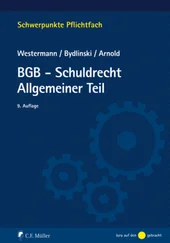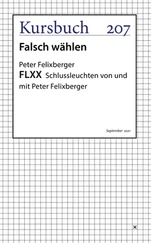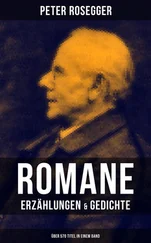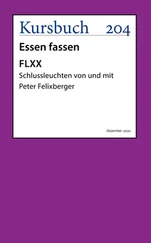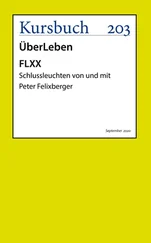“The bottom line here is I think I can get you down eighteen hundred feet—if we’re lucky and nothing else collapses. Is that deep enough for what you’ve got in mind?”
“It’ll have to be,” Booker said. He’d gone over the numbers several times with Thompson and Atkins. Based on the record of previous underground shots, a depth of two thousand feet would provide maximum seismic impact on the fault.
“How big is that bomb?” Murray asked.
“Approximately four feet by two and a half. It weighs 420 pounds,” Booker said.
Murray whistled between his teeth. “We’ll talk about that later,” he said. “I’ve got to tell you people there are a lot of ways to die in this old mine. And I’m not even including the methane, which is worry enough. Some of the roofs and wall ribs have caved in. I’m not telling you anything you don’t already know, but whenever the ground moves, we’ve got more problems.”
Murray leaned over and spat. A wad of chewing tobacco bulged out his left cheek. “You got any other place to explode this bomb?”
“It’s got to be here,” said Steve Draper. “We don’t have any other options.”
Arms folded across his chest, Murray nodded as if to say he’d expected that answer. He seemed to be contemplating his boots, which were crusted with white powder.
Atkins noticed the president’s furrowed brow. He was following Murray’s description intently.
“Let’s talk about the methane,” Murray said. “You get a methane concentration of five to fifteen percent, you’re gonna risk an explosion. When we got down to eighteen hundred feet, we were reading three percent methane and it was starting to nudge up a little. That can be bad news.” He had a question for them. “You know what it’s like if you’re in one of those shafts and methane explodes below you?”
No one answered.
Murray said, “It’s like sitting inside a shotgun barrel.” He let his words hang there a moment, then asked how many were going.
“Six,” Atkins said. It was the absolute minimum. If anything happened to some of them, the others might still be able to get the job done. Booker was the only absolutely essential member of the group. Atkins wasn’t excited at the prospect of making the descent with Weston, but he had to admit that Weston had been acting with unusual restraint. He was listening attentively and was not trying to run the show.
“Make that seven,” Booker said. “I want to take a robot with us. It can carry the weapon and other supplies.” He’d already made arrangements with the Oak Ridge National Laboratory to have the robot and other equipment sent to the mine. The president himself had ordered the transportation. The helicopter was expected any minute.
“Can it maneuver?” Murray asked. He looked skeptical.
“On a dime,” Booker said. “It can go anywhere we can. It’s forty inches tall. The arms are retractable.”
“Does this robot of yours have a name?” Murray said. His crinkled face broke into a frown.
“Neutron,” said Booker.
“That’s perfect,” Murray said, still frowning. “I don’t like it, but as long as I don’t have to tell it what to do, I don’t have a problem.” He spat again and cleared his throat. “In a couple minutes, I’ll give you some instructions on the breathing apparatus and other equipment you’ll be carrying. Listen hard and pay attention. Your life could depend on what I’m going to tell you.”
Murray looked at his watch. His arms, hands, and wrists were thick-boned, the forearms wrapped with coils of muscle. “If you still want to do this, we’ll start down in another hour.”
“JEFF, great to see you.”
Booker had hurried over to a helicopter as it landed on the mine’s gravel parking lot. It took off quickly as soon as Jeff Burke was on the ground and his equipment unloaded. Booker pumped his friend’s hand.
Burke had arrived straight from the ORNL. He came bearing gifts. “I’ve got Neutron,” he said. “Everything you asked for.”
The small robot was covered in plastic sheeting. So were the two boxes of explosive charges that had also been shipped from Oak Ridge. Booker planned to use them to seal up the mine before the bomb was detonated.
Booker couldn’t help smiling. Burke had fitted Neutron with an oversized football helmet. It was bright orange, the color of his favorite college team, the University of Tennessee. His alma mater. It even had a big UT logo on the side.
“I couldn’t find a miner’s helmet big enough to go over the actuator housing,” Burke said. “I wanted to protect it. This was the best I could come up with.”
“And so you just happened to find that helmet,” Booker said.
“What can I say. It fit,” Burke said, grinning.
Booker introduced Atkins and Elizabeth Holleran to his old friend. The president and Steve Draper came over to join them.
Using the robot’s control panel, Booker put Neutron through several maneuvers, which included manipulating the robot’s powerful hydraulic “human extender” arms to lift the MK/B-61. The demonstration impressed Doc Murray. Neutron easily carried the four-foot-long, cylindrically shaped weapon.
“Not bad,” Murray said. “I can see why you want that little guy to come along with us.”
Booker then turned to a discussion of the arming-and-firing procedure he planned to follow with the MK/B-61.
It was Elizabeth’s first good look at the weapon and its gleaming, stainless-steel housing. Like Atkins, she was struck by its small size. She’d expected something much larger for a one-megaton nuclear bomb. Atkins was right. He’d compared it to an elongated trash can.
Ross was among those who listened, hanging on Booker’s every word. They were shielded from the flanking hillsides by a double row of military trucks. Several more squads of troops had moved into the woods that sloped up from the mine. There’d been a few shots earlier, but for the time being all firing had ceased.
Booker used sheets ripped from a yellow legal pad to sketch out the bomb’s firing system.
Atkins took notes as he tried to keep warm. The sun had broken through the gloom, but it wasn’t enough to take the chill out of the air. He tried to concentrate and stay awake. After the trip from Texas and now this, he needed sleep, craved it. Even half an hour would have been a blessing. When this was over, he was going to lock himself up in a hotel room with Elizabeth and not come out for days.
Booker’s plan was to use a time-delay fuse, which he’d set once they were in position in the mine. There was less risk of error or mechanical breakdown that way, he explained. The firing signal from the timer would release an electrical charge stored in the capacitors, which would set off the detonators. That blast, in turn, would ignite the high explosives that encased the nuclear pit.
The mechanics of the time-delay fuse were fairly simple: the electrical charge from the capacitors would open two normally closed contact circuits and close two other circuits that were normally open. The process would send an electrical pulse across a bridge wire, triggering the detonators.
“How much time are you giving yourself to get out?” Ross asked.
“Four hours,” Booker said.
“Is that enough?”
Atkins wondered the same thing. Based on what Doc Murray had seen in the mine, the sooner they got out of there, the better. Four hours didn’t give them much leeway in case something went wrong.
“It better be,” Booker said. “Once the timer is set, you can’t turn it off without going back. I don’t think we’ll want to do that. For that matter, I don’t think we’ll get the chance.”
During their descent, Booker would set explosives at key points in the mine. They’d be timed to go off exactly one minute before the blast. The plastic charges were designed to seal off all four shafts to prevent any radioactive material from venting into the atmosphere.
Читать дальше







